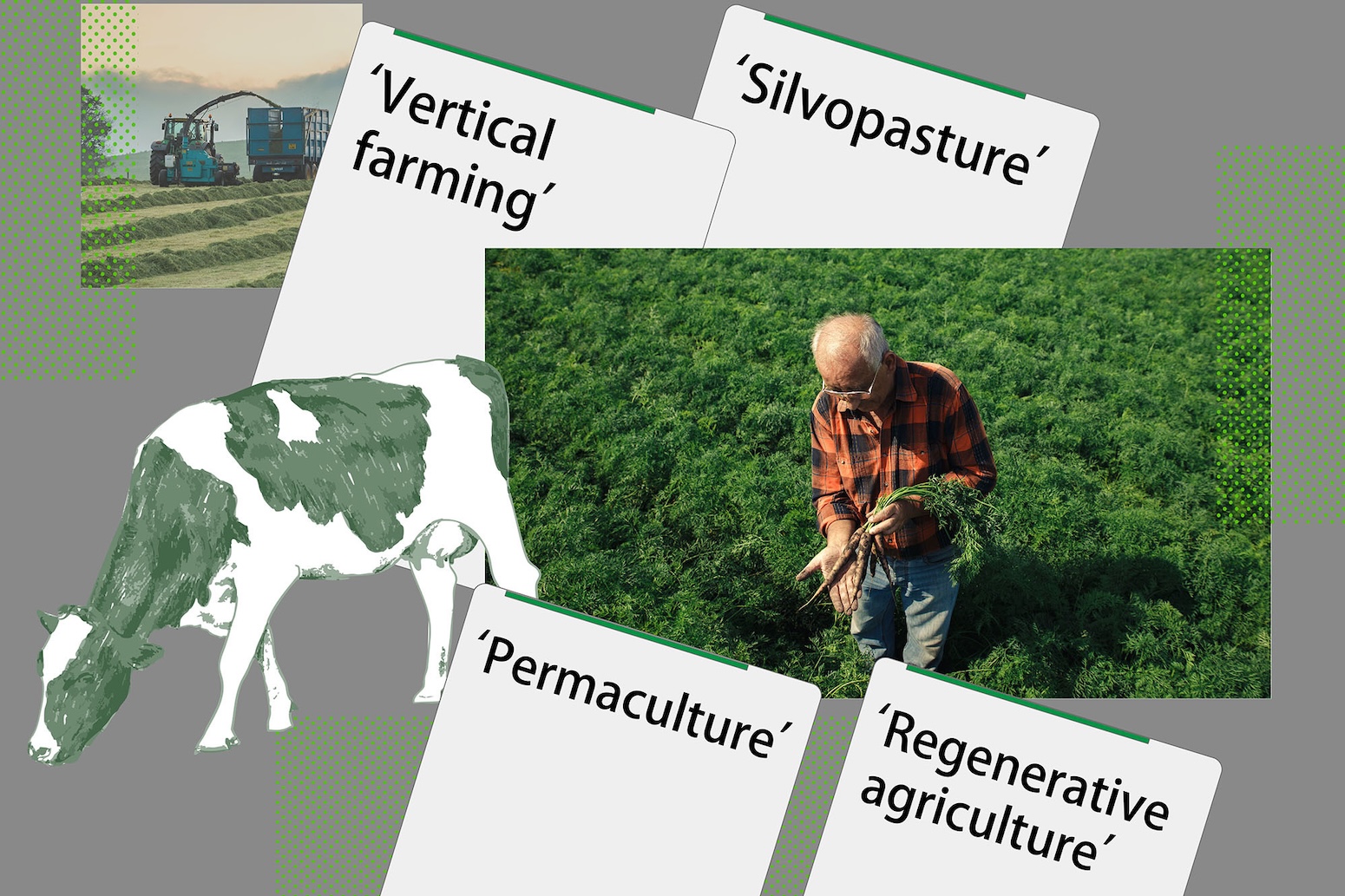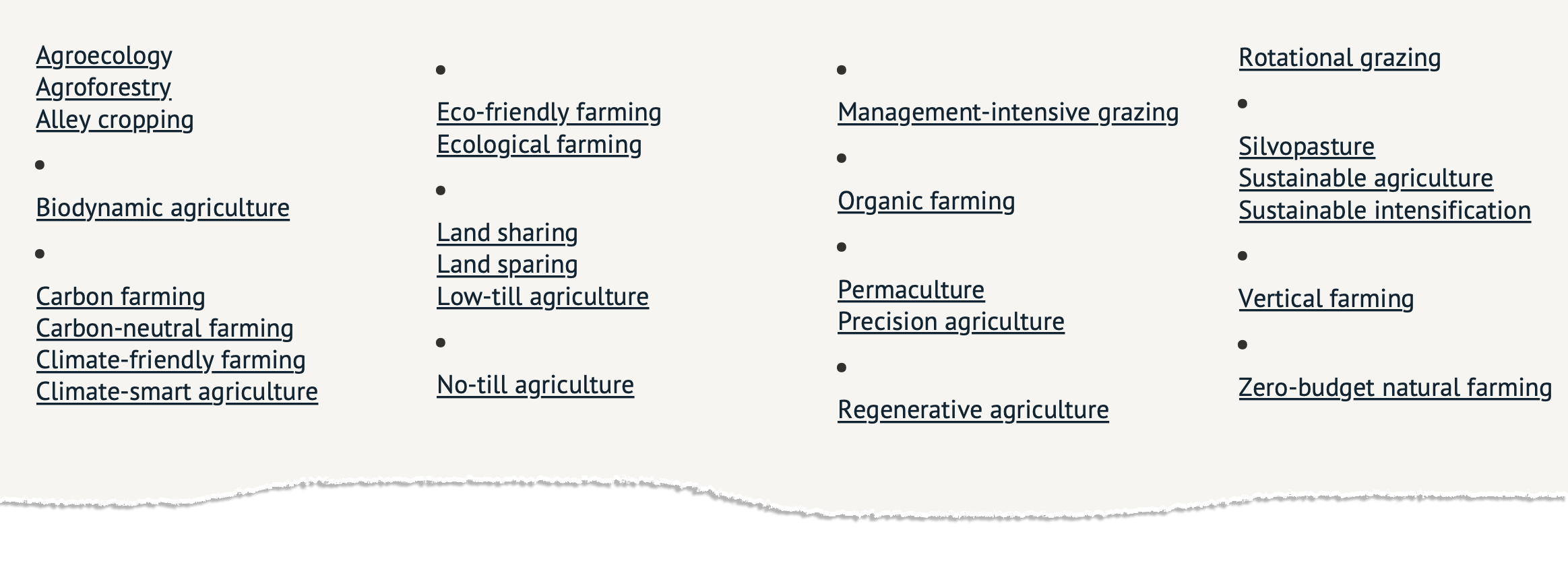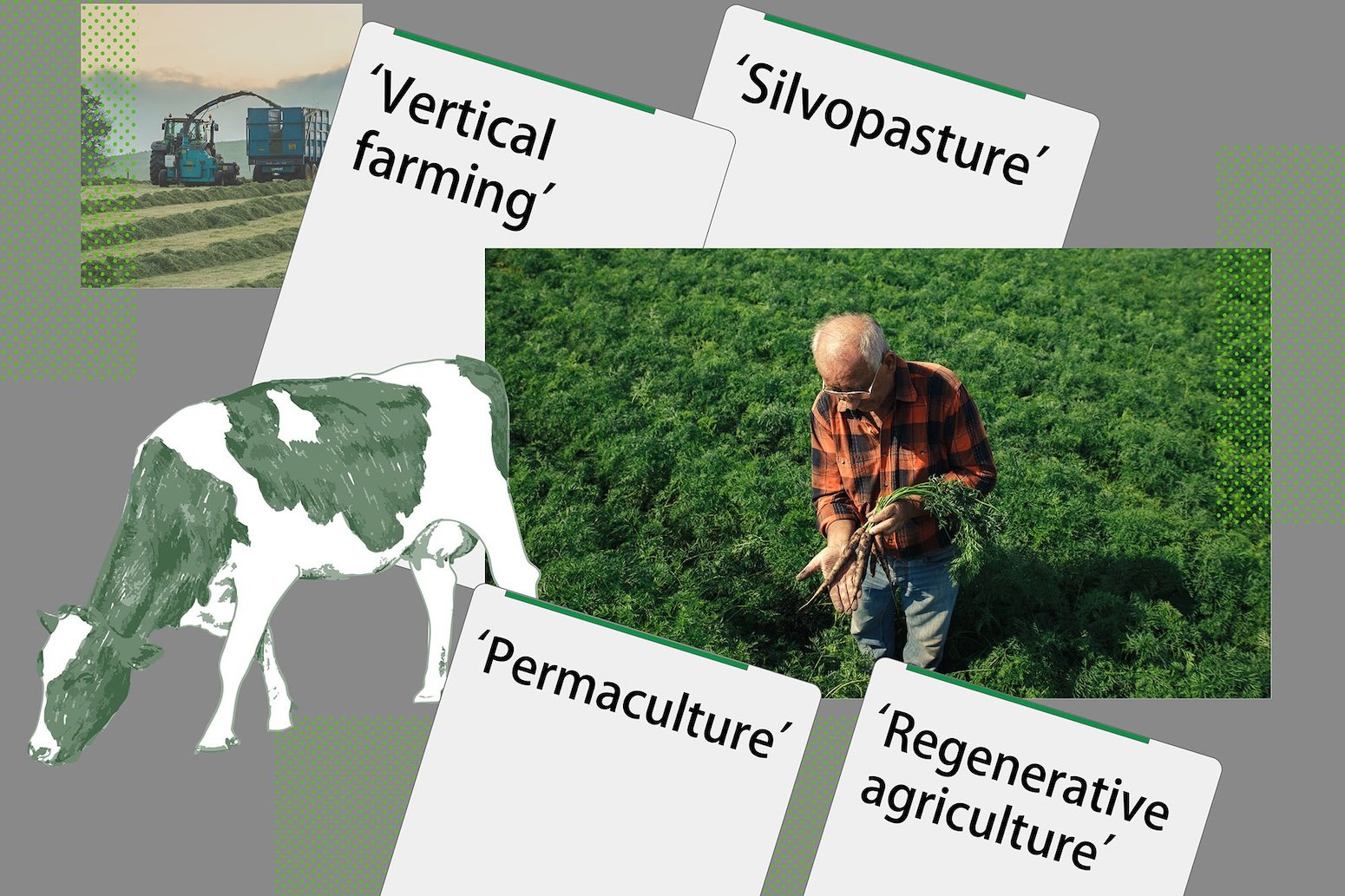We handpick and explain the most important stories at the intersection of climate, land, food and nature over the past fortnight.
This is an online version of Carbon Brief’s fortnightly Cropped email newsletter. Subscribe for free here.
Key developments
Beef vs the Amazon
COP30 LOOMS: Ahead of the COP30 climate summit in Brazil later this year, the Guardian has published a series of articles spotlighting the beef industry’s destruction of the Brazilian Amazon. In the first, journalists from the Guardian, Unearthed and Repórter Brasil interviewed more than 35 people, including ranchers and ranching union leaders, who expressed disbelief that the world’s largest meat company, Brazilian firm JBS, would be able to sufficiently curb its deforestation. JBS has overseen large-scale deforestation in the Amazon, but pledged to “clean up its beef supply chain in the region by the end of 2025”, the Guardian said. JBS told the Guardian that it contested the conclusions.
‘BULLETS AND BEEF’: The second focused on the diminishing fortunes of the Amazon’s “cowboys” – cattle ranchers that seized forest for beef production and now face an uncertain future as local climate impacts worsen. According to the newspaper, Vinicius Borba, a land owner representing rural producers in the Indigenous territory of Apyterewa, told a meeting of farmers: “I am called a land-grabber, an invader, a deforester, but it is not my fault…I have a property that we have occupied for over 20 years and, to this day, the government has not given me the title.” The third followed the life and death of a “laundered cow” in the Amazon.
PERUVIAN AMAZON IN PERIL: Elsewhere, environmental and Indigenous groups have warned that a recent amendment to Peru’s Forestry and Wildlife Law could accelerate deforestation in the Peruvian Amazon, the Associated Press said. The amendment removes a requirement for landowners or companies to get state authorisation before converting forested land to other uses, the newswire said, adding: “Critics say the change could legitimise years of illegal deforestation.”
Tariff roundup
SOY IT GOES: Senior diplomats from China and Brazil met this week in Brasilia for talks on Brazilian agricultural exports “against the backdrop of unprecedented [US-China] trade tension”, South China Morning Post reported. Topics included “expanding Brazil’s [soya] harvest and accrediting Brazilian slaughterhouses for export to China”, it added. Brazil and Argentina “are emerging as early winners in the global trade war that’s upending agricultural markets”, Bloomberg wrote. A Global Times comment from a professor at Shanghai University said that China-Brazil trade cooperation “is not only an urgent necessity, but also an obvious possibility”.
‘FRENCH FRY WAR’: The global impacts of tariffs on food products and farmers were extensively reported this past fortnight. Business Insider covered the “french fry war” over canola oil prices. The New York Times looked at how US competitors could edge out Italian food producers using products “made to look and sound as if they are from Italy”. The Japan Times looked at how reciprocal tariffs could “throw cold water” on Japan’s agricultural exports to the US, including green tea, sake, scallops, beef and rice. At the same time, Japan reeled from its own “surging rice prices”, importing the staple from South Korea for the first time in 25 years, Bloomberg reported.
REALITY BITES: Trump’s tariffs are a “shock to the system” that could drive US farmers to “financial ruin” on the back of “worsening climate shocks”, the Guardian reported. It added that unprecedented flooding caused “millions of dollars of crop losses” in the midwest and Texas in recent weeks. Separately, Al Jazeera reported that farmers across villages in India burned effigies of US vice president JD Vance, who was visiting the country “as the Modi government desperately tries to duck US tariffs”. The story noted that “India has kept tariffs high to safeguard its farmers from imports that might otherwise flood domestic markets”. Nearly half the country’s population is dependent on agriculture.
Spotlight
Carbon Brief’s glossary of ‘sustainable’ farming methods
Carbon Brief recently published a glossary of 25 ‘climate-friendly’ farming methods, including methods for growing vegetables, fruits, grains and legumes, as well as those for raising and pasturing livestock.
This week, two experts in sustainable farming discuss the pros and cons of some of the techniques laid out in the glossary.

Large farms, which typically involve industrial farming, occupy 70% of the world’s agricultural land.
Intensive farming arose with the industrial revolution between 1760 and 1840 and seeks to maximise crop production and yield by mechanising processes, planting monocultures and using chemical inputs, such as fertilisers and pesticides. Although industrial farming has had higher yields compared to other farming methods, it has also led to problems such as soil depletion, greenhouse gas emissions and biodiversity loss.
In the decades since, a myriad of so-called climate and environment “friendly” farming methods have emerged as potential solutions to the environmental and social problems sparked by industrialisation, Dr Michele Gomes, an agroecologist and professor at Vânia Medeiros Lopes State School, in Mato Grosso do Sul, Brazil, told Carbon Brief. Examples include agroecology, regenerative agriculture, silvopasture systems and sustainable agriculture.
These less-intensive methods typically use fewer pesticides and fertilisers, along with promoting more interactions with biodiversity.
Many of these terms are widely used in environmental spaces, reports and international conferences, including the UN biodiversity and climate negotiations.

Mixed definitions
Some of the farming methods laid out in the glossary have clearer definitions than others.
Ecological farming, agroecology and organic farming are examples of methods with more established definitions. This is due to a combination of factors, including a strong scientific foundation, potential application to various regions and the ability for farmers to obtain certifications, Gomes told Carbon Brief.
She added that newer methods, which are still being studied, may have different interpretations and uses – as is the case with climate-smart farming and precision agriculture.
Many of the glossary’s methods share common goals and advantages, such as mitigating climate change impacts and economic and social viability, said Dr Erica Muñiz, a researcher at Mexico’s National Institute of Forest, Agriculture and Livestock Research (INIFAP) and president of the Mexican Society of Sustainable Agriculture.
However, some only focus on addressing ecological problems, while others also consider social and economic aspects. For example, precision agriculture uses technology to solve environmental problems by reducing the use of fertilisers, but it does not necessarily address food sovereignty, food security or social justice, she added.
Sustainable farming methods
Both Muñiz and Gomes agreed that many factors go into choosing the best farming method. The optimal method for a given farm depends on the availability of land and inputs and the desired objectives of farmers.
However, they provided general considerations for selecting the most sustainable and cost-effective farming methods.
Muñiz said that producers “urgently require the implementation of agroecological principles” and apply them to local contexts. At the same time, she said, governments need to implement policies that include sustainability and incorporate peasants’ knowledge. She told Carbon Brief:
“Sustainability is the optimum point to which we aspire to reach and each of these kinds of agriculture contributes to a greater or lesser extent to achieving this.”
For Gomes, among the most sustainable farming methods are agroecology and ecological agriculture, as they do not use chemical inputs, but integrate social factors and peasants’ knowledge. Other methods, such as silvopasture and precision agriculture, “when applied sustainably, can be extremely efficient and profitable for farmers”, she added.
Gomes told Carbon Brief:
“The transition is a complex process, but with a combination of public policy, education and consumer demand, it is possible to move towards a more sustainable global agricultural system.”
News and views
POISONED PADDY: New research found that as “carbon emissions rise and the Earth continues to warm, so too will arsenic levels in rice”, BBC News reported. While “almost all rice contains arsenic”, amounts can vary, the study noted. Rising CO2 levels could contribute to “approximately 19.3m more cancer cases in China alone” due to increased arsenic intake, it said. The outlet pointed out that the worst-case warming scenario in the study was “beyond the high emissions” scenario used by the Intergovernmental Panel on Climate Change. But, it added, the research “provides a snapshot” of what could happen to rice crops globally – not just in China, where the researchers conducted their experiments.
LANCET LOBBIED: A “mud-slinging” campaign against a landmark climate-friendly diets study published in 2019 was coordinated by a PR firm on behalf of the meat lobby, according to a DeSmog investigation. The EAT-Lancet report recommended that people in the global north eat less meat to benefit both the planet and their health. DeSmog obtained a document that “indicates that [PR consultancy] Red Flag briefed journalists, thinktanks and social media influencers to frame the peer-reviewed research as ‘radical’, ‘out of touch’ and ‘hypocritical’”. According to the document, Red Flag was acting on the behalf of the Animal Agriculture Alliance, a meat and dairy industry coalition, DeSmog said. Neither organisation responded to requests to comment.
GLOBAL BLEACHING: Scientists warned that the world’s coral reefs have been pushed into “uncharted territory” by the “worst global bleaching event on record that has now hit more than 80% of the planet’s reefs”, the Guardian reported. Reefs in at least 82 countries and territories “have been exposed to enough heat to turn corals white since the global event started in January 2023”, it added. Reuters noted that the scientists say that the “devastating mass bleaching [has been] spurred by record-high ocean temperatures”. The newswire quoted Dr Melanie McField, a marine scientist working in the Caribbean, who said: “The magnitude and extent of the heat stress is shocking.” Meanwhile, the Guardian reported that Australia’s next government, to be elected on 3 May, could represent a “last chance” for ensuring the survival of the Great Barrier Reef.
OCEANS TREATY: The first of three meetings to decide how the world will implement a landmark ocean treaty began on 14 April in New York. Decisions to be made include the meeting frequency, as well as information-sharing and voting procedures. The “countdown is on towards reaching 60 ratifications, which will allow the agreement to enter into force”, Earth Negotiations Bulletin reported, with only 21 governments having ratified it so far. Elsewhere, Scientific American reported from “the closest thing in the world to an operational deep-sea mining site” in Papua New Guinea, with an exploration company using a “controversial mining license” to conduct seafloor mining tests.
DIVINE NATURE: There was widespread coverage of the environmental legacy of Pope Francis, who died on Monday at the age of 88. The New York Times noted that the Pope’s “Laudato Si” was the first papal encyclical focused solely on the environment. (See Carbon Brief coverage from the time.) The newspaper called the encyclical a “sprawling call to action” that “recognised climate change as both a social and environmental crisis” and “emphasised that its greatest consequences were shouldered by the poor”. It continued that Pope Francis published a follow-up in 2023 with “Laudate Deum”, which called out climate sceptics and said that “human beings must be recognised as a part of nature”.
Watch, read, listen
CRISPR, HAPPIER, MORE PRODUCTIVE: National Public Radio spoke to Dr Brad Ringeisen, executive director of the Innovative Genomics Institute, on whether CRISPR gene-editing “may hold the key” to climate-resilient crops.
PESTICIDE PALSY: A Politico long read profiled Dutch neurologist Bas Bloem and his “fight” to contain the environmental drivers of Parkinson’s disease, especially after finding a pattern of cases cropping up in areas dominated by intensive agriculture.
DOCTOR’S ORDERS: CNN’s Chasing Life podcast explored the relationship between nature and human health.
SECRETS OF THE FOREST: NOVA followed scientists in forest landscapes from Costa Rica to Australia to understand how much carbon forests can store.
New science
- A new attribution study in the Proceedings of the National Academy of Sciences found that global warming – especially since the year 2000 – is making marine heatwaves more “intense, longer and more frequent”. It estimated that climate change has led to a three-fold increase in the number of marine heatwave days and a 1C increase in maximum intensity on a global average.
- Converting just 3.2% of the land used to grow corn for ethanol in the US to solar power could increase the share of utility-scale solar energy from 3.9 to 13%, according to another study in the Proceedings of the National Academy of Sciences. It estimated that if solar were developed on 46% of the land reserved for corn ethanol, it could generate enough energy to meet the US’s 2050 decarbonisation goals.
- Forests are taking longer to recover from fires as they become larger and more intense due to climate change, a Nature Ecology and Evolution study found. It examined the impact of more than 3,000 large-scale fires on forests over 2001-21.
In the diary
- 14-25 April: First meeting of the preparatory commission for the UN “High Seas Treaty” | New York
- 28-30 April: Our Ocean Conference | Busan, South Korea
- 28 April-9 May: 2025 Conferences of the Parties to the Basel, Rotterdam, and Stockholm Conventions | Geneva
Cropped is researched and written by Dr Giuliana Viglione, Aruna Chandrasekhar, Daisy Dunne, Orla Dwyer and Yanine Quiroz. Please send tips and feedback to cropped@carbonbrief.org
The post Cropped 23 April 2025: Beef vs the Amazon; BRICS vs tariffs; Ag alphabet appeared first on Carbon Brief.


